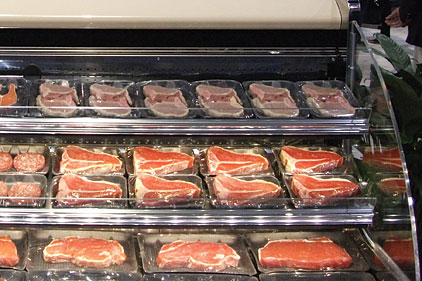The phaseout of first CFCs and then HCFCs initially caused somewhat of a panic in the industry over alternatives — only to be favorably resolved with the wider use of HCFCs to replace CFCs, and then the introduction of HFCs for refrigeration and air conditioning applications.
While HFCs remain high on the radar screen of first-choice refrigerants, issues related to global warming potential (GWP) have caused the industry to look for yet another f-gas option. Drawing the most attention are hydrofluoroolefins (HFOs).
It has already become the mandated refrigerant in vehicles in Europe with HFO-1234yf replacing HFC-134a in auto air conditioning.
Its potential has caused at least two refrigerant manufacturers to announce brand names for its line of HFOs.
On Sept. 12 Honeywell announced the launch of Solstice™, which includes -1234yf and 1234ze, the latter a blowing agent and propellant.
“Honeywell is pleased to offer its Solstice line of materials for customers who are looking for high performance, energy-efficient, cost-effective, and safe technologies that offer dramatically lower global warming potentials than traditional fluorocarbons,” said Terrance Hahn, vice president and general manager of Honeywell Fluorine Products.
In literature released by DuPont, the company labeled its line of HFOs as Opteon™, and noted Opteon XP10 “for many air conditioning and refrigeration applications, including medium temperature refrigeration, air conditioning and water chillers; as well as Opteon yf, another branding of -1234yf.”
Drivers
With HFCs still on solid footing in North America and no phase-down mandates pending, the industry has different views of how HFOs might be used in the future beyond automotive a/c.
Matt Ritter, director of government affairs for Arkema, said, “We continue to investigate HFOs for many applications. However, the driver for such products is either through climate change restrictions or through technology leading to better performance within specific applications. In some applications, it appears that HFOs may have a performance advantage that could be driven by energy efficiency regulations.”
Eric Youngdale, global marketing manager for DuPont, said, “Timing of United States demand for these reduced GWP candidates is uncertain and will largely be determined by the timing of phase-down or other regulations impacting HFCs. It is possible that there could be limited market demand ahead of regulations by market segments that want to reduce their carbon footprint by using lower GWP refrigerants.’’ For Danfoss’ Robert Wilkins, vice president of public affairs, HFOs figured into the range of options that keeps that sky from falling. “Danfoss continues to develop products for a wide range of refrigerants. These include HFCs, HFOs, isobutane, propane, ammonia and carbon dioxide. No single refrigerant or type of refrigerant is right for all applications, demands for energy efficiency, lower environmental impact and safety.”
New Safety Rating
Use of HFOs in stationary applications brings with it a new safety rating: A2L. Wilkins offered a detailed perspective in comments to The NEWS in late October. “The new A2L safety rating establishes a category for mildly flammable refrigerants with low flame propagation characteristics. Two reduced-GWP refrigerants, HFC32 and HFO1234yf, are in this new category. While both are mildly flammable, tests show that it is difficult to sustain and propagate combustion of these refrigerants. Of course, blends of refrigerants could also fall in this category.
“Separating the A2L category from the A2 category is now leading ASHRAE to consider modifying its Standard 15, which is the safety standard for design, installation and operation of equipment. This standard already permits use of A2 and A3 flammable refrigerants in systems utilizing less than 150 grams of charge, but prohibits their use in comfort cooling. ASHRAE will likely consider use of A2L refrigerants in comfort cooling, or in larger charges. Some manufacturers are already evaluating these low-GWP options for their equipment.”
Publication date: 12/05/2011



Report Abusive Comment